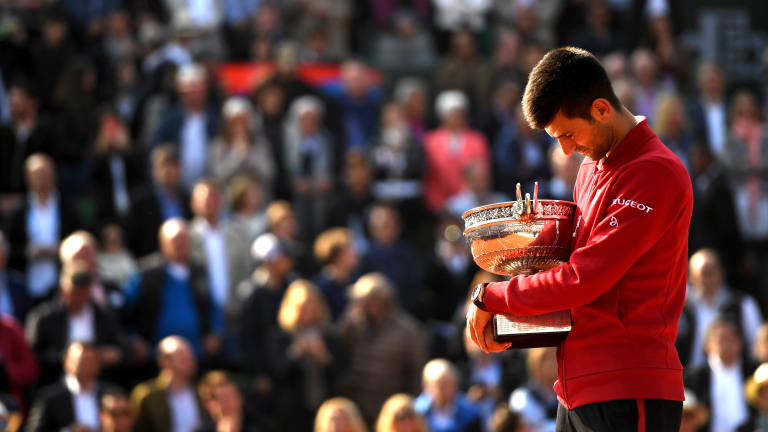Facts & Stats
Happy birthday, Nole! 36 stats for Novak Djokovic’s 36th birthday
By May 22, 2023Facts & Stats
Most prize money in 2025: Aryna Sabalenka breaks single-season WTA record
By Dec 05, 2025Facts & Stats
Most wins in 2025: Carlos Alcaraz dominates leaderboard with sparkling 71-9 record
By Dec 04, 2025Facts & Stats
Biggest ranking jumps in 2025: Amanda Anisimova makes biggest leap into Top 10
By Dec 03, 2025Facts & Stats
Most titles in 2025: Carlos Alcaraz joins exclusive list with eight trophies this year
By Dec 02, 2025Facts & Stats
Most aces in 2025: Elena Rybakina becomes first woman in nine years to surpass 500 aces
By Dec 01, 2025Facts & Stats
10 sensational things Jannik Sinner achieved by winning this year's ATP Finals in Turin
By Nov 20, 2025Facts & Stats
Roger Federer is headed to the International Tennis Hall of Fame: 26 stats for his 2026 induction
By Nov 19, 2025Facts & Stats
Generational Rivalry: Jannik Sinner, Carlos Alcaraz head into 2026 after playing for four of five biggest titles
By Nov 16, 2025Facts & Stats
Carlos Alcaraz and Jannik Sinner's blockbuster final clash at the ATP Finals: 10 things to know
By Nov 16, 2025Happy birthday, Nole! 36 stats for Novak Djokovic’s 36th birthday
From winning streaks to prize money records and numbers of wins over his biggest rivals, here are 36 of his greatest stats.
Published May 22, 2023
Advertising

Djokovic is 20-0 in semifinals and finals combined at the Australian Open—he's also won his last 28 matches in a row, period, at the Happy Slam.
© 2023 Getty Images
Advertising

At 29 years and 14 days, Djokovic completed his Career Slam at Roland Garros in 2016.
© 2016 Getty Images